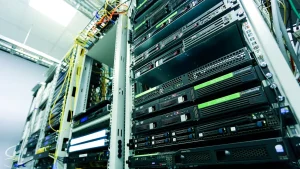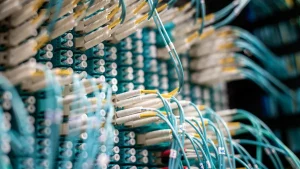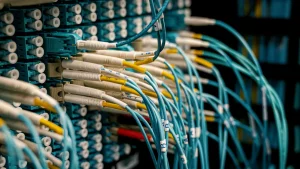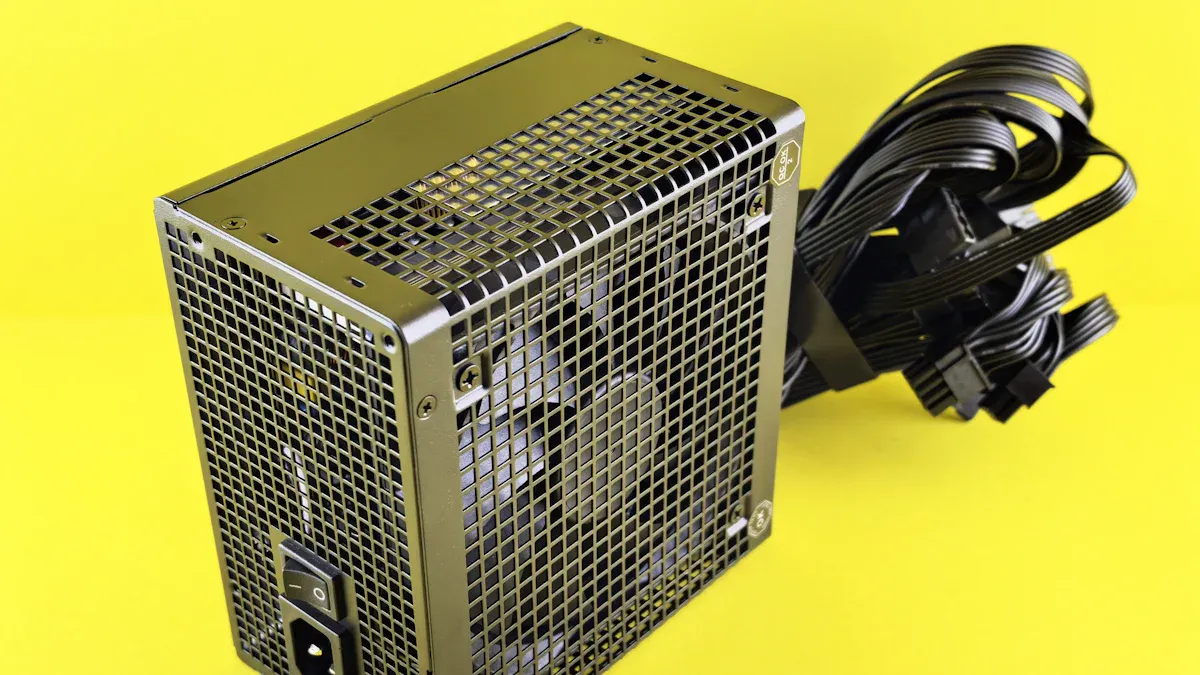
In 2025, the choice between PDUs and power strips significantly impacts power management efficiency in both commercial and residential settings. PDUs, such as the 19″ cabinet PDU, including the 19″ cabinet PDU Denmark style, offer high-capacity power distribution tailored for IT infrastructure. They excel in monitoring and remote control capabilities, making them ideal for data centers and server rooms. In contrast, power strips serve basic power distribution needs, suitable for homes and small offices. Understanding these differences, especially the benefits of the 19″ cabinet PDU Denmark style, is crucial for optimizing power management solutions.
Key Takeaways
- PDUs are designed for high-capacity power distribution, making them ideal for data centers and server rooms.
- Power strips are simpler devices that expand outlet availability for home and office use, suitable for low amperage devices.
- Smart PDUs offer advanced features like real-time monitoring and remote access, enhancing power management efficiency.
- Surge protector power strips safeguard sensitive electronics from voltage spikes, making them essential for home use.
- Choosing the right device depends on your power needs; use PDUs for complex setups and power strips for basic applications.
- Invest in high-quality PDUs with robust safety features to ensure reliable power distribution in demanding environments.
- Energy efficiency is crucial; both PDUs and smart power strips can help reduce energy waste and lower costs.
- Stay informed about trends in power management, such as the shift towards smart technologies and modular designs.
Fundamental Differences
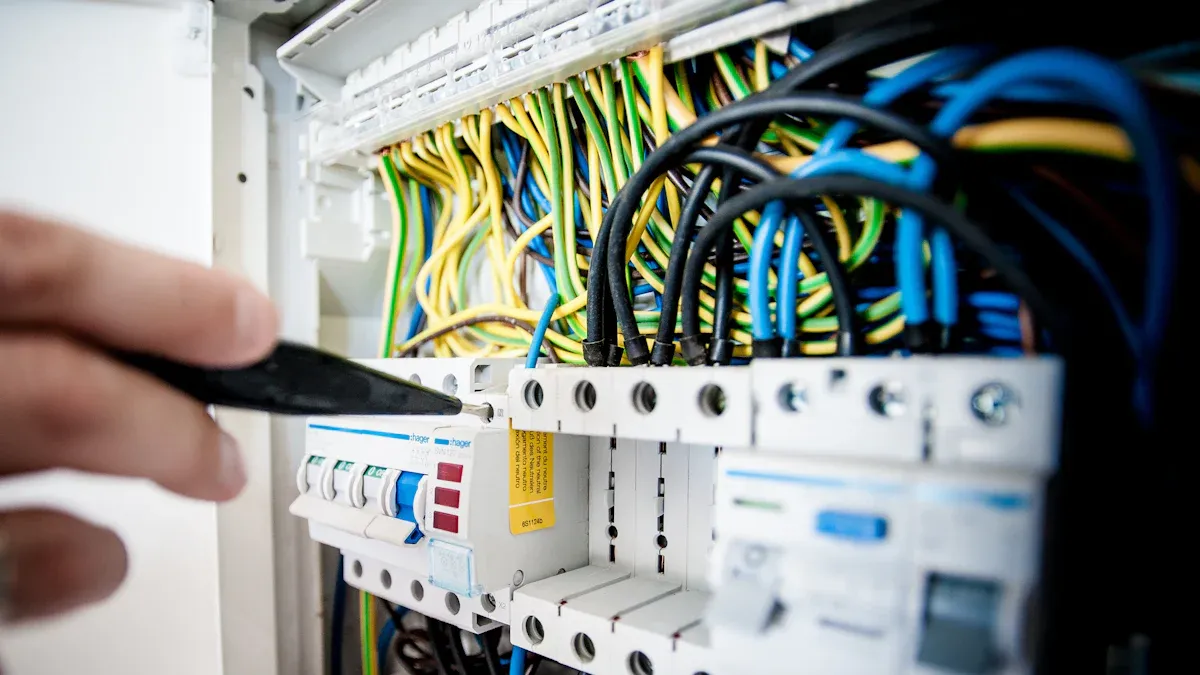
Definition of PDUs
In 2025, power distribution units (PDUs) are essential devices that manage electrical power in data centers and similar environments. They serve as high-capacity power strips, offering multiple outlets designed for industrial-grade applications. Basic PDUs provide standard electrical outlets, while intelligent PDUs include advanced features such as real-time monitoring and remote access. These capabilities allow IT administrators to oversee power distribution effectively, enhancing uptime by proactively addressing potential power issues.
Definition of Power Strips
Power strips, often referred to as Re-locatable Power Taps (RPT) or Surge Protective Devices (SPD), are simpler devices designed to expand the number of available electrical outlets. A power strip consists of a length of electrical sockets attached to a flexible cable that plugs into a wall receptacle. They are commonly used in residential and office settings where additional outlets are necessary. Power strips can vary in design, featuring plastic-coated heads or metal-encased banks of outlets. They primarily cater to low amperage devices, such as computers and televisions, and improper use can lead to increased electrical demand on the outlet and circuit.
Key Functional Differences
The functional differences between PDUs and power strips are significant and cater to different needs. The following table summarizes these differences:
| Feature | PDU | Power Strip |
|---|---|---|
| Outlet Types | Industrial-grade outlets (IEC C13/C19) | Domestic outlets only |
| Outlet Quantity | 4 to 48 outlets | 2 to 8 outlets |
| Inlet Types | Supports industrial-grade inlets | Domestic inlets only |
| Cordset Thickness | 1.5 mm² to 10 mm² (14 AWG to 6 AWG) | Typically 1.5 mm² (14 AWG) |
| Inlet/Cordset Quantity | Single or dual configurations available | Always a single cordset |
| Power Phase (Voltage) | Supports single and three-phase power | Generally single-phase only |
PDUs allow for remote access and monitoring of power supply, making them suitable for complex IT infrastructures. In contrast, power strips are designed for basic power needs in homes and offices. PDUs provide better cable organization and data security compared to power strips, which often lack these advanced features. Overall, PDUs offer comprehensive power management capabilities, while power strips serve more straightforward applications.
Configurations
Types of PDUs
19″ Cabinet PDU
The 19″ cabinet PDU is a staple in data centers and server rooms. This type of PDU fits seamlessly into standard server racks, providing multiple outlets for high-density power distribution. It typically supports industrial-grade outlets, allowing for efficient power management. The design ensures optimal airflow and cable management, which is crucial for maintaining equipment performance.
Smart PDUs
Smart PDUs offer advanced features that enhance power management capabilities. These units provide real-time monitoring of power consumption, voltage, and current. They often include remote access capabilities, allowing IT administrators to manage power distribution from anywhere. Smart PDUs can integrate with environmental sensors, providing alerts for unusual power conditions. This proactive approach helps prevent potential outages and equipment failures.
Metered PDUs
Metered PDUs focus on real-time local monitoring. They display critical metrics such as current, voltage, and total power consumption. This information helps users identify inefficiencies and prevent overloads. Metered PDUs typically support up to 20A at 120V, making them suitable for various applications. Their ability to provide immediate feedback on power usage is invaluable for optimizing energy efficiency.
| Type of PDU | Distinguishing Features |
|---|---|
| Basic PDU | Simple, reliable power distribution; ideal for small setups; supports up to 24 outlets. |
| Metered PDU | Real-time local monitoring; displays current, voltage, and total power consumption. |
| Monitored PDU | Remote tracking of energy usage; proactive alerts for unusual power conditions. |
| Switched/Intelligent PDU | Advanced control with remote outlet management; IoT-enabled connectivity. |
Types of Power Strips
Basic Power Strips
Basic power strips are the most common type used in homes and offices. They provide a simple solution for expanding the number of available outlets. Users can connect devices such as computers, monitors, and printers to these strips. Basic power strips typically feature durable plastic or metal housings and can accommodate up to 24 outlets.
Surge Protector Power Strips
Surge protector power strips offer an added layer of safety by protecting connected devices from voltage spikes. These strips are essential for sensitive electronics, such as HDTVs and audio/video equipment. They often include features like indicator lights to show protection status and may have built-in circuit breakers to prevent overloads.
Smart Power Strips
Smart power strips integrate technology to enhance user control. They allow users to manage power consumption through mobile apps or voice commands. These strips can schedule on/off times for connected devices, contributing to energy savings. Smart power strips are ideal for modern homes and offices where energy efficiency is a priority.
Common devices connected to power strips include:
- Computers
- Monitors
- Printers and peripherals
- HDTVs
- Audio/video equipment
- Network/wireless hardware
- Video game systems
- Office equipment
Power strips serve as versatile solutions for various applications, from home use to temporary installations.
Applications
Common Uses for PDUs
Data Centers
Data centers represent the largest and fastest-growing segment for PDUs in 2025. As organizations increasingly rely on cloud computing and digital services, the demand for efficient power management solutions rises. PDUs, particularly the 19″ cabinet PDU, play a critical role in distributing power to numerous servers and networking equipment. Their ability to handle high-capacity loads and provide real-time monitoring makes them indispensable in maintaining uptime and optimizing energy efficiency.
Server Rooms
Server rooms require robust power distribution systems to support critical IT infrastructure. PDUs offer the necessary features to manage power effectively, ensuring that servers operate without interruption. The integration of smart PDUs allows for remote monitoring and management, enabling IT administrators to respond swiftly to power-related issues. This capability is vital for maintaining the reliability of server operations.
Industrial Settings
In industrial environments, PDUs provide essential power solutions for manufacturing and automation processes. The increasing demand for intelligent PDUs reflects the need for enhanced energy efficiency and integration with building management systems. These units help streamline operations and reduce downtime, contributing to overall productivity. As industries evolve, the role of PDUs in supporting advanced technologies becomes more pronounced.
| Application Area | Prevalence Description |
|---|---|
| Data Centers | Largest and fastest-growing segment due to cloud computing and digital services. |
| Industrial | Requires robust solutions for manufacturing and automation, with increasing demand for intelligent PDUs. |
| Commercial | Focus on energy efficiency and integration with building management systems, with a shift towards smart buildings. |
| Residential | Growing due to smart home technologies, with increasing demand for home automation systems. |
| Others | Includes sectors like transportation and education, contributing to the diverse PDU market landscape. |
Common Uses for Power Strips
Home Use
Power strips have become a staple in homes, with over 57% of households utilizing them. The proliferation of electronic devices necessitates additional outlets for charging and powering gadgets. Families often connect multiple devices, such as phones, tablets, and televisions, to power strips, making them essential for modern living.
Office Environments
In office settings, power strips serve a vital role in expanding available outlets. Approximately 43% of enterprises use power strips, particularly in IT infrastructure and coworking spaces. These devices allow employees to connect computers, printers, and other office equipment conveniently. Surge-protected power strips are especially popular, with about 51% of offices implementing them to safeguard sensitive electronics.
Temporary Installations
Power strips are ideal for temporary installations, such as events or exhibitions. They provide a quick and flexible solution for powering devices without the need for extensive electrical work. Users can easily set up and dismantle power strips, making them a practical choice for short-term applications.
- Key Benefits of Power Strips:
- Expand outlet availability
- Protect devices from surges
- Facilitate easy setup for temporary needs
Physical Differences
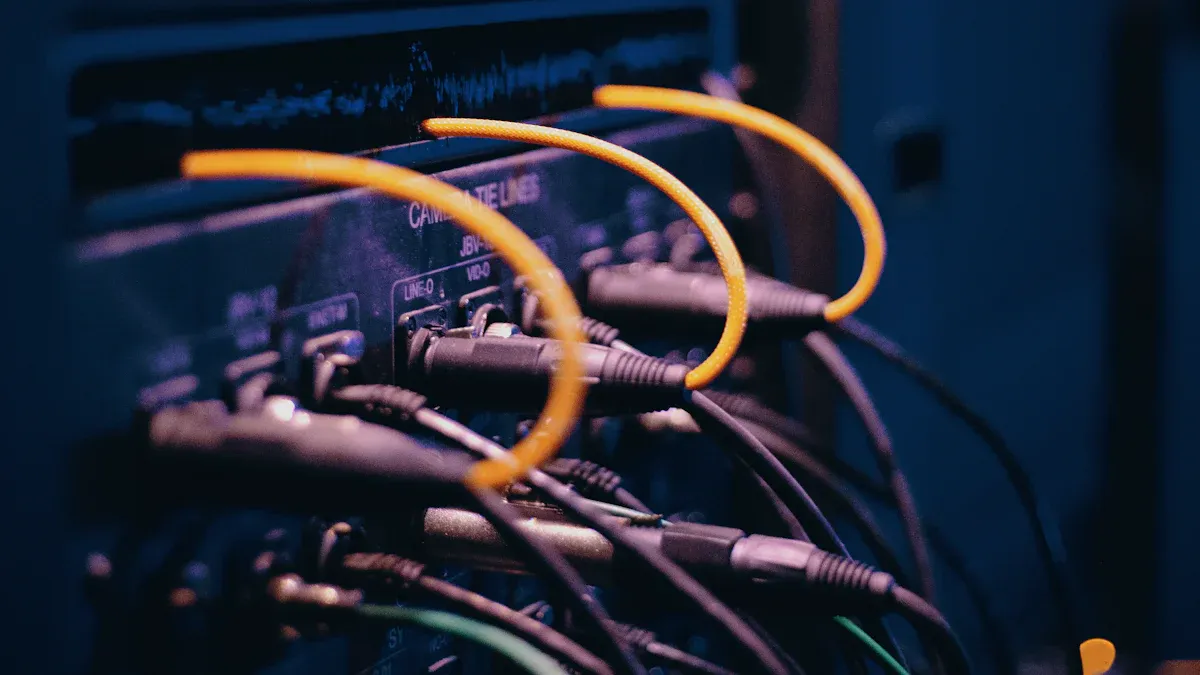
Design and Build Quality
The design and build quality of PDUs and power strips differ significantly. PDUs typically feature robust construction, designed to withstand the demands of industrial environments. They often utilize metal housings, which provide durability and heat dissipation. In contrast, power strips usually consist of plastic casings, which are lighter and more portable but may not offer the same level of protection. This difference in materials reflects the intended use of each device. PDUs cater to high-capacity applications, while power strips serve basic household needs.
Number of Outlets
The number of outlets available on PDUs and power strips varies considerably. PDUs can accommodate anywhere from 4 to 48 outlets, depending on the model and configuration. This extensive outlet count allows for efficient power distribution in data centers and server rooms. Conversely, power strips typically offer between 2 to 8 outlets. This limited capacity suits home and office environments where fewer devices require power. The outlet count directly influences the usability of each device, with PDUs providing greater flexibility for complex setups.
Cable Length and Flexibility
Cable length and flexibility are crucial factors in the installation and usability of PDUs and power strips. PDUs generally feature longer cables, allowing for greater flexibility in positioning and installation. This design accommodates the complex layouts often found in data centers and industrial settings. In contrast, power strips usually come with shorter cables, which limits their flexibility. The following table summarizes these differences:
| Feature | Basic PDUs | Power Strips |
|---|---|---|
| Size | Larger, designed for complex setups | Smaller, designed for simpler setups |
| Cable Length | Generally longer for flexibility | Typically shorter, less flexible |
| Flexibility | Greater due to industrial use | Limited due to home/office use |
| Outlet Count | 4 to 48 outlets | 2 to 8 outlets |
These physical differences highlight the distinct roles that PDUs and power strips play in power management. Understanding these variations helps users select the appropriate device for their specific needs, whether for a data center or a home office.
Safety Features
Safety features play a crucial role in the effectiveness of power management devices. Both PDUs and power strips incorporate mechanisms to protect against electrical hazards, but their approaches differ significantly.
Overload Protection
Overload protection is vital for preventing devices from drawing more power than the circuit can handle. PDUs typically include advanced circuit protection mechanisms designed for high-demand environments. They often feature industrial-grade resettable circuit breakers or miniature circuit breakers (MCBs). These components automatically disconnect power when they detect an overload, reducing the risk of fire or equipment damage.
"Overload protection is another essential safety feature. It prevents devices from drawing more power than the circuit can handle. PDUs typically include industrial-grade resettable circuit breakers or miniature circuit breakers (MCBs). These components automatically disconnect power when they detect an overload, reducing the risk of fire or equipment damage."
In contrast, power strips usually offer basic surge protection and may lack overload protection altogether. This limitation can expose connected devices to potential hazards, especially in environments with multiple high-power devices.
Surge Protection
Surge protection is another critical safety feature that helps safeguard sensitive electronics from voltage spikes. Modern PDUs with surge protection utilize components like metal oxide varistors (MOV) and gas discharge arrestors (GDA) to manage these voltage spikes effectively. These devices are essential for protecting sensitive electronics in environments like server rooms from electrical disturbances.
- Unlike standard power strips, surge-protected PDUs absorb or divert excess voltage, significantly reducing the risk of damage to valuable IT equipment.
- They often include features such as joule ratings to indicate energy absorption capacity and indicator lights to signal when protection is compromised.
This advanced surge protection capability makes PDUs a preferred choice for environments where equipment reliability is paramount.
Circuit Breakers
Circuit breakers serve as a fundamental safety feature in both PDUs and power strips. They act as a safeguard against electrical overloads by interrupting the flow of electricity when a fault occurs. PDUs often incorporate more sophisticated circuit protection systems, allowing for better monitoring and management of power distribution.
The effectiveness of these circuit protection mechanisms varies significantly. PDUs are designed to handle high power demands, making them suitable for industrial settings. They often include advanced monitoring capabilities that allow users to track power usage and identify potential issues before they escalate. This proactive approach enhances overall safety and reliability in power management.
Advanced Functions
Monitoring and Management Features
Advanced PDUs offer a range of monitoring and management features that significantly enhance data center operations. These features include:
- Real-time Monitoring: Continuous tracking of power consumption, temperature, and humidity helps operators quickly identify issues.
- Environmental Monitoring: Integration with sensors provides real-time readings, ensuring optimal conditions for sensitive equipment.
- Load Status Tracking: Monitoring current levels allows for alerts when thresholds are approached, preventing overloads.
- Event Logging: Recording power events aids in trend analysis and troubleshooting.
- Advanced Reporting: Detailed reports support data-driven decision-making, optimizing power distribution.
These capabilities lead to improved energy efficiency, cost savings, enhanced operational reliability, and support for sustainability goals. By balancing loads and preventing overloads, intelligent PDUs contribute to reduced energy waste and lower operational costs.
| Feature | Description |
|---|---|
| Real-time Monitoring | Continuous monitoring of power consumption, temperature, and humidity to quickly identify issues. |
| Environmental Monitoring | Supports sensors for real-time temperature and humidity readings to maintain optimal conditions. |
| Load Status Tracking | Monitors current levels and issues alerts when thresholds are approached. |
| Event Logging | Logs power events for trend analysis and troubleshooting. |
| Advanced Reporting | Provides detailed reports for data-driven decision-making. |
Remote Access Capabilities
Smart PDUs and power strips offer remote access capabilities that enhance user control and security. Intelligent PDUs, for instance, allow outlet-level power monitoring and control, environmental sensing, and advanced alerting. They connect through various protocols, such as Ethernet, SNMPv3, and HTTPS, ensuring secure communication.
| PDU Type | Key Management Features | Network Connectivity (Protocols) | Primary Cyber Security Risks | Key Mitigation Approaches |
|---|---|---|---|---|
| Intelligent PDU (iPDU) | Outlet-level power monitoring & control; environmental sensing; advanced alerting; DCIM integration; local display. | Yes (e.g., Ethernet – SNMPv3, HTTPS, SSH, REST APIs, RADIUS/LDAP) | High; unauthorized access leading to full control (power manipulation, configuration changes), RCE, DoS, data leakage, network pivot point. | Comprehensive security: strong authentication (MFA, centralized auth), RBAC, encryption, network segmentation/firewalling, regular vulnerability scanning and patching, secure firmware, disabling unused services, secure default configurations, audit logging. |
These features empower users to manage power distribution from anywhere, enhancing operational efficiency. However, they also introduce potential cybersecurity risks. Implementing robust security measures, such as multi-factor authentication and regular vulnerability assessments, mitigates these risks effectively.
Energy Efficiency Features
Energy efficiency is a critical consideration in modern power management. Advanced PDUs and smart power strips incorporate features that promote energy savings and sustainability. Key benefits include:
- Energy Monitoring: Tracking consumption patterns helps identify inefficiencies.
- Optimization Capabilities: Reducing energy wastage lowers operational costs.
- Remote Management: Oversight of power usage occurs without physical presence.
- Identifying Inefficiencies: Proactive measures in energy management lead to smarter energy use.
Smart PDUs can perform remote on/off switching for individual outlets, optimizing energy use further. This capability not only reduces energy wastage but also contributes to lower electricity bills and supports sustainability goals by promoting smarter energy use.
In summary, PDUs and power strips serve distinct purposes in power management. The table below highlights their key differences:
| Feature | Power Strip | PDU |
|---|---|---|
| Power Phase (Voltage) | 110V / 208V / 230V single-phase | 110V / 208V / 230V single-phase, 208V / 400V three-phase |
| Customization | Rarely customizable | Built-to-order options available |
| Applications | Homes, shops, offices | IT and data center environments |
| Installation | No specific installation location | Mounted to IT server racks |
| Physical Differences | Commonly bar-shaped | Vertical 0U or horizontal 1U/2U rack mount |
| Safety Devices | Basic safety features | Advanced safety features including surge protectors and circuit breakers |
| Advanced Functions | Basic functionality | Intelligent features with remote access and monitoring options |
For users seeking reliable power solutions, consider the following recommendations:
- Look for sturdy units with a reliable, powder-coated metal chassis.
- Ensure power outputs have a sufficient amperage rating (10 amps is recommended).
- Choose a manufacturer with a long-standing business history for stability and reliability.
Looking ahead, trends indicate a significant shift towards smart technologies in power management. Users can expect increased demand for energy-efficient solutions, modular designs, and integrated USB charging ports. As the landscape evolves, manufacturers will likely enhance PDUs and power strips with advanced features like power sequencing and load balancing, catering to the needs of modern work environments.
FAQ
What is the primary purpose of a PDU?
A power distribution unit (PDU) distributes electrical power to multiple devices in data centers and server rooms. It manages high-capacity loads and offers advanced monitoring features.
How does a surge protector power strip work?
Surge protector power strips absorb excess voltage during power spikes. They use components like metal oxide varistors (MOVs) to divert harmful surges away from connected devices.
Can I use a PDU at home?
Yes, PDUs can be used at home, especially in setups requiring multiple devices or high-capacity power. However, they are more common in commercial and industrial environments.
What are the benefits of smart power strips?
Smart power strips allow users to control devices remotely, schedule on/off times, and monitor energy usage. They enhance energy efficiency and convenience in modern homes and offices.
How do I choose between a PDU and a power strip?
Consider your power needs. Use a PDU for high-capacity applications like data centers. Opt for a power strip for basic home or office use with fewer devices.
Are PDUs safe to use?
Yes, PDUs are designed with safety features like overload protection and circuit breakers. They ensure safe power distribution in environments with high electrical demands.
What is the difference between metered and smart PDUs?
Metered PDUs provide local monitoring of power consumption, while smart PDUs offer remote access and advanced management features, including alerts and environmental monitoring.
How many devices can I connect to a power strip?
Most power strips accommodate 2 to 8 devices, depending on the model. Ensure the total power draw does not exceed the strip’s rated capacity to avoid overload.
